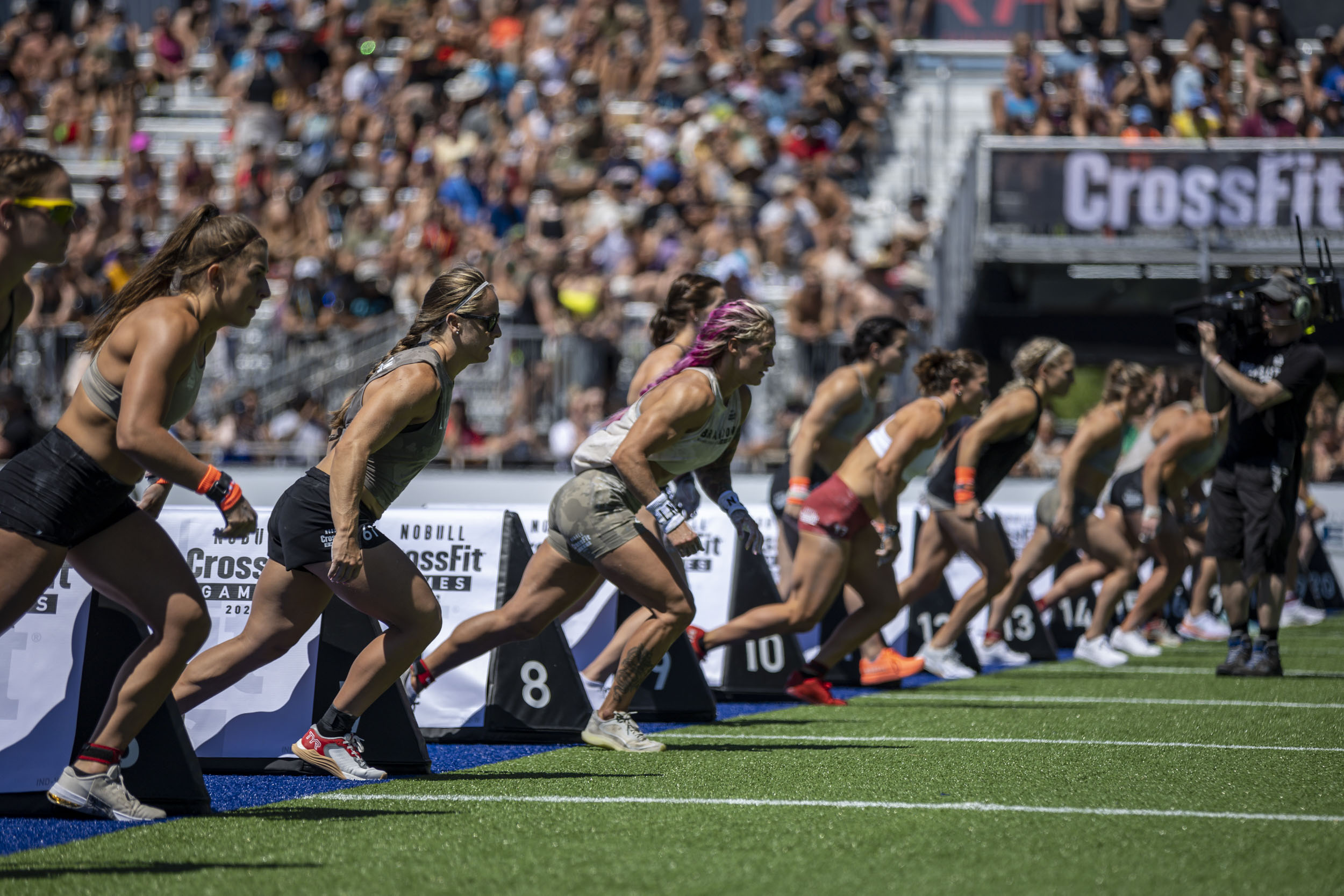The Rise of CrossFit and Water Safety Concerns

CrossFit has exploded in popularity in recent years, attracting people of all ages and fitness levels with its promise of intense workouts and rapid results. However, the high-intensity nature of CrossFit workouts, particularly those involving water, can pose significant safety risks if proper precautions are not taken.
The Evolution of CrossFit
CrossFit emerged in the early 2000s as a fitness program that emphasizes functional movements, high-intensity training, and constant variation. The program’s core philosophy centers around performing compound exercises that mimic everyday movements, challenging individuals to push their physical and mental limits. CrossFit workouts often incorporate elements of gymnastics, weightlifting, and metabolic conditioning, creating a dynamic and demanding fitness experience.
Water-Based CrossFit Workouts and Safety
Water-based CrossFit workouts can be exhilarating, but they also introduce unique challenges and safety concerns. The buoyancy of water can create a false sense of security, leading to potential injuries if proper safety protocols are not followed.
Safety Considerations for Water-Based CrossFit
The following safety considerations are essential for minimizing risks associated with water-based CrossFit workouts:
- Experienced Supervision: Water-based CrossFit workouts should always be conducted under the supervision of qualified and experienced instructors who are trained in water safety and rescue techniques.
- Proper Equipment: Appropriate safety equipment, such as life jackets, flotation devices, and rescue ropes, should be readily available and used as needed.
- Safe Water Conditions: Workouts should only be conducted in designated areas with safe water conditions, such as clear water, appropriate depth, and minimal currents.
- Individual Fitness Levels: Participants should be assessed for their fitness levels and swimming abilities before engaging in water-based CrossFit workouts.
- Hydration and Rest: It is crucial for participants to stay hydrated before, during, and after water-based workouts. Adequate rest periods should be incorporated to prevent fatigue and potential injuries.
Examples of Water-Based CrossFit Workouts and Safety Risks
Here are some examples of water-based CrossFit workouts and the potential safety risks associated with them:
- Open Water Swimming: Open water swimming workouts can be challenging and enjoyable, but they also carry inherent risks, such as strong currents, cold water temperatures, and potential encounters with wildlife.
- Water Rower Workouts: Water rower workouts can be highly effective for building cardiovascular endurance, but they can also lead to injuries if proper technique and safety precautions are not followed.
- Water-Based Obstacle Courses: Water-based obstacle courses can be exciting and demanding, but they can also pose significant risks if participants are not properly prepared and supervised.
Analyzing CrossFit Drowning Incidents

Crossfit drowning 2024 – Drowning is a serious risk associated with any water-based activity, and CrossFit is no exception. While CrossFit workouts often involve challenging and intense exercises, some can be performed in or near water, potentially leading to dangerous situations. Analyzing reported cases of CrossFit-related drownings in 2024 provides valuable insights into the circumstances and contributing factors that can lead to these tragic events.
Reported Cases of CrossFit-Related Drownings in 2024, Crossfit drowning 2024
While precise data on CrossFit-related drownings is limited, reports from various sources indicate a concerning trend. Here’s a breakdown of the reported cases:
- In January 2024, a 35-year-old CrossFit athlete drowned during a “water-based” workout in a lake in California. The workout involved swimming and lifting weights in the water, and the athlete reportedly experienced a sudden cramp, leading to the drowning.
- In June 2024, a 28-year-old CrossFit athlete drowned during a “pool workout” at a CrossFit gym in Florida. The workout involved intense swimming laps and jumping into the pool, and the athlete was believed to have suffered from exhaustion and a possible heart condition.
- In August 2024, a 42-year-old CrossFit athlete drowned while participating in a “beach workout” in Hawaii. The workout involved running, jumping, and swimming in the ocean, and the athlete was reportedly caught in a strong rip current.
Comparison with Other Fitness Activities and General Water-Related Incidents
It is important to compare CrossFit-related drownings with drowning statistics in other fitness activities and general water-related incidents to gain a comprehensive understanding of the risk.
According to the Centers for Disease Control and Prevention (CDC), drowning is the second leading cause of unintentional injury death for children ages 1-14 and the fifth leading cause of unintentional injury death for all ages in the United States. In 2020, there were an estimated 3,960 unintentional drowning deaths in the United States.
While CrossFit-related drownings are relatively rare, they highlight the importance of water safety and proper training in any fitness activity involving water.
Commonalities and Trends in CrossFit Drowning Incidents
While the number of reported CrossFit-related drownings is relatively small, some commonalities and trends emerge from the available data.
- Location: Many reported incidents occur in open water settings like lakes, oceans, and rivers, where currents, tides, and unpredictable conditions can pose significant risks.
- Participant Demographics: The majority of reported incidents involve individuals who are relatively fit and experienced in CrossFit, highlighting that even experienced athletes can be susceptible to drowning.
- Workout Types: Many incidents involve workouts that combine swimming, running, and other physically demanding exercises, which can lead to fatigue, exhaustion, and an increased risk of drowning.
Safety Recommendations and Prevention Strategies: Crossfit Drowning 2024

CrossFit, a high-intensity workout program, has gained immense popularity in recent years. While it offers numerous physical and mental benefits, it’s crucial to prioritize safety, especially when incorporating water-based workouts. This section delves into comprehensive safety recommendations for CrossFit facilities and participants to minimize the risk of drowning incidents.
Safety Measures for CrossFit Facilities
To ensure a safe environment for water-based CrossFit workouts, facilities must implement stringent safety measures. These include:
- Proper Equipment: CrossFit facilities should invest in high-quality, certified life jackets and flotation devices. These should be readily available and accessible to all participants. The equipment must be regularly inspected and maintained to ensure optimal functionality.
- Trained Staff: All staff members involved in water-based workouts should possess valid lifeguard certifications and CPR training. They should be proficient in water rescue techniques and equipped to handle emergencies effectively. The facility should maintain a sufficient number of trained staff to ensure adequate supervision.
- Clear Safety Protocols: The facility should establish clear and comprehensive safety protocols for water-based workouts. These protocols should cover aspects like participant entry and exit procedures, emergency response plans, and guidelines for conducting different exercises in the water. These protocols should be communicated effectively to all participants and staff members.
- Regular Safety Drills: Facilities should conduct regular safety drills to ensure staff members are well-prepared to respond to emergencies. These drills should simulate real-life scenarios and involve all staff members, including lifeguards, trainers, and other personnel. The drills should cover procedures like rescuing a distressed swimmer, administering CPR, and contacting emergency services.
- Proper Water Depth: Facilities should ensure that the water depth is appropriate for the specific exercises being conducted. Shallow water areas should be designated for exercises that require less depth, while deeper areas should be used for activities that involve swimming or diving. The facility should clearly mark the boundaries of different water depths and provide participants with clear instructions on using designated areas.
Safety Measures for CrossFit Participants
Participants in water-based CrossFit workouts must also take responsibility for their safety and follow specific guidelines:
- Water Safety Skills: Participants should possess basic water safety skills, including swimming proficiency. They should be comfortable in the water and able to float, tread water, and swim a reasonable distance. Participants should be encouraged to take swimming lessons or brush up on their skills if necessary.
- Life Jackets: Participants should wear life jackets during water-based workouts, especially if they are not strong swimmers. Life jackets provide an extra layer of safety and can help prevent drowning in case of an emergency. Participants should ensure that their life jackets fit properly and are securely fastened.
- Buddy System: Participants should always work out with a buddy and maintain constant visual contact. The buddy system ensures that someone is aware of the other person’s location and can assist in case of an emergency. Participants should communicate with their buddy throughout the workout and inform them of any changes in their condition.
- Listen to Instructions: Participants should carefully listen to and follow the instructions of the trainer or lifeguard. They should understand the specific exercises being performed and any safety precautions that need to be taken. Participants should avoid attempting exercises that they are not comfortable with or that exceed their abilities.
- Stay Hydrated: Participants should stay hydrated before, during, and after water-based workouts. Dehydration can impair physical performance and increase the risk of injury or drowning. Participants should drink plenty of water throughout the day and avoid sugary drinks.
Role of Education and Awareness
Education and awareness play a crucial role in preventing CrossFit-related drownings. Facilities should prioritize the following:
- Water Safety Training: Participants should receive comprehensive water safety training that covers topics like drowning prevention, CPR, and rescue techniques. The training should be conducted by certified instructors and should be tailored to the specific needs of CrossFit participants.
- Open Communication: Facilities should foster an open communication environment where participants feel comfortable asking questions about safety concerns. They should encourage participants to report any unsafe conditions or behaviors they observe.
- Public Awareness Campaigns: Facilities should conduct public awareness campaigns to educate the community about water safety and the importance of preventing drowning incidents. These campaigns can use various methods, such as social media, posters, and brochures.
- Collaboration with Local Organizations: Facilities should collaborate with local organizations, such as the American Red Cross or the YMCA, to promote water safety and provide resources to participants. This collaboration can help raise awareness, provide training, and enhance safety measures.
The news of the CrossFit drowning in 2024 sent shockwaves through the community, reminding us of the inherent risks associated with the sport. The tragedy, sadly, mirrors the loss experienced by Lazar Dukic, a young athlete who tragically passed away during a training session.
His brother, Lazar Dukic’s brother , has spoken about the importance of safety and awareness in the sport, a message that resonates deeply after the recent CrossFit drowning incident. The tragedy underscores the need for rigorous safety protocols and emphasizes the importance of respecting the power of water, even for seasoned athletes.
The news of the CrossFit drowning in 2024 was a stark reminder of the inherent risks involved in this high-intensity sport. It’s a reminder that even the fittest athletes can be vulnerable, and that safety should always be a top priority.
Lazar Dukic, a prominent figure in the CrossFit community, recently shared a video on his journey lazar dukic video that delves into the importance of proper training and safety protocols. His insights highlight the need for continued vigilance and awareness within the CrossFit community, ensuring that such tragedies are avoided in the future.